An ancient naval fleet serving the English Crown
During our adventures around the Kent and East Sussex coastline, we’ve regularly come across the Cinque Port signs and their references to the local naval endeavours.
The name “Cinque Ports” is Old French, meaning "five harbours".
Over time we’ve now explored all the ports, limbs and ancient towns and dug a little deeper into their intriguing history. Tales of seafaring mariners, contraband smuggling and swashbuckling yarns still echo around the wood panelling of inns and taverns.
The ancient castles of Dover, Deal, Walmer, Ypres Tower in Rye and the ruins of Hastings castle still line the coastline. Along this stretch of the shore, many of the iconic Martello Tower fortifications, so distinct from this region of the UK, also still remain.
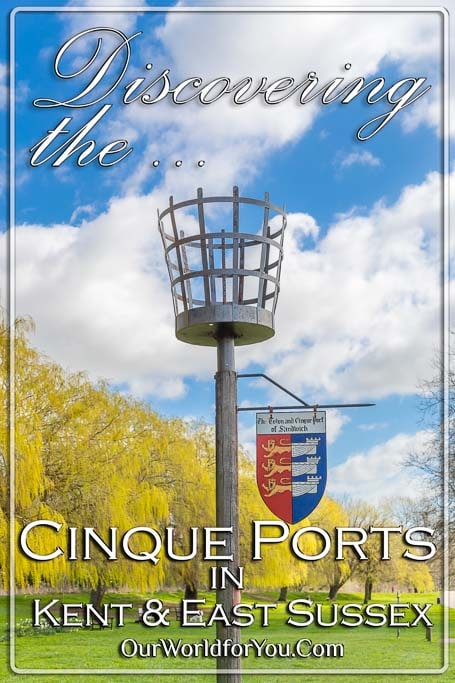
What I find fascinating is how this part of Kent and East Sussex has evolved over the centuries. The tiniest of villages and hamlets that were once a stone’s throw from the sea have now become inland communities.
Today I’ll share our discoveries from within the present-day Cinque Ports. How time and tide has transformed and shaped the landscape and how their nautical past still runs deep through their streets.
The Cinque Port Confederation
- Dover
- Hastings
- Hythe
- New Romney
- Sandwich
- Rye
- Winchelsea
- Deal
- Faversham
- Folkestone
- Lydd
- Margate
- Ramsgate
- Tenterden
A brief history on the Cinque Ports
Ancient Towns, Limbs and Lord Wardens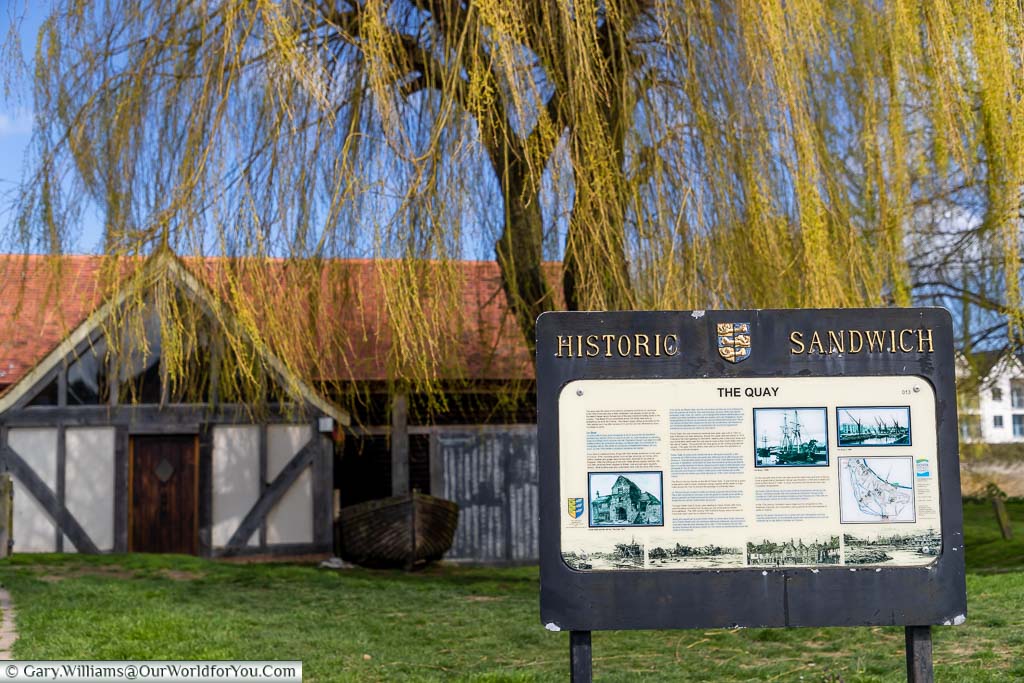
Through to the 16th-century, not only were the five ports required to supply ships they would also be called upon to provide the crew. Depending on the port, a specified number of ships were made available for 15 days every year and each crewed by 21 men and a boy.
For some of the ports, this would prove to be quite a burden on the small towns, and therefore had to recruit help from nearby towns and villages. These were known as “Limbs” during the height of the Crown’s requirements; up to 30 limbs were attached to the head ports.
The seven surviving limbs are Deal, Faversham, Folkestone, Lydd, Margate, Ramsgate and Tenterden.
As centuries passed, natural disasters, disease and foreign attacks took their toll on the Head Ports, especially Hastings. The small towns of Rye and Winchelsea went from contributing two ships between them to a total of 15 from Hastings’s quota of 21 ships. This impact raised the status of Rye and Winchelsea, and they gained the same privileges as the five Head Ports and therefore became “Ancient Towns”.
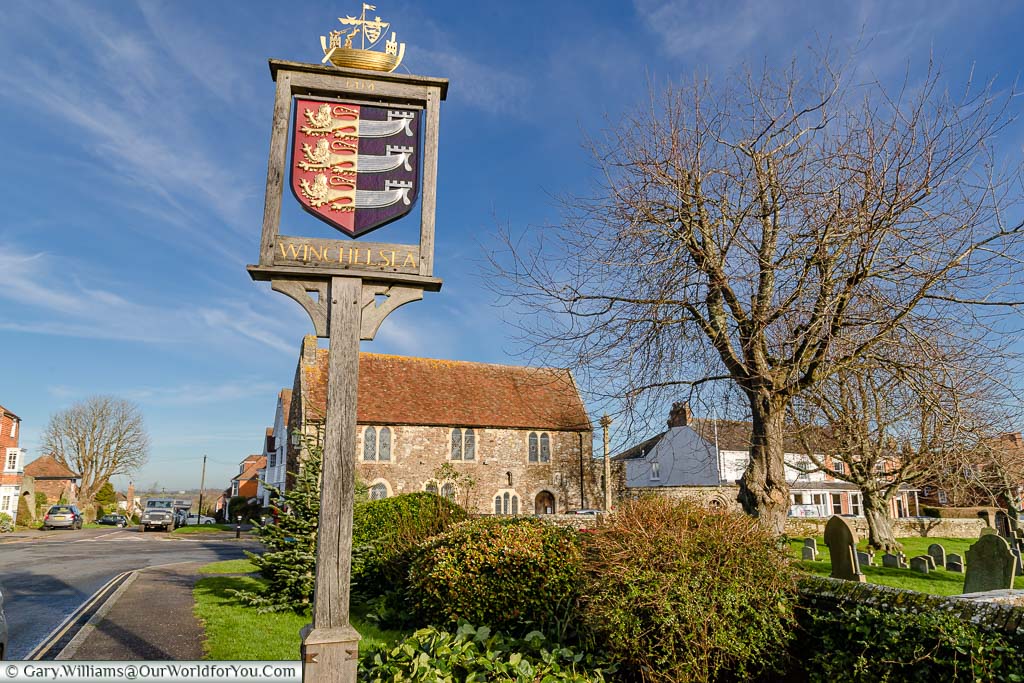
The demand of the Cinque Ports grew, and Naval requirements expanded along with the size of the ships and fleets. Therefore, the Royal Navy began to evolve, and the tidal creeks of Kent and East Sussex were no longer sufficient. Consequently, specialist dockyards and Naval ports were established.
The Confederation of the Cinque Ports still exists today, along with the appointment of Lord Warden. The Lord Warden, known as the ‘Keeper of the Coast’ prior to the 13th-century has been held by many notable people. A few you may recognise are Henry VIII, William Pitt the Younger, Arthur Wellesley, 1st Duke of Wellington famed for his boots, Sir Winston Churchill and HM Queen Elizabeth The Queen Mother.
Southeast England Great Storm of 1287
A coastline is redrawn foreverWhat is mind-blowing to comprehend in the present day is that some of these ports and limbs were coastal towns, and vast ships would enter their waterways.
In February 1287, a devastating storm landed with such force that the 13th-century Kent and Sussex shoreline was reshaped for eternity.
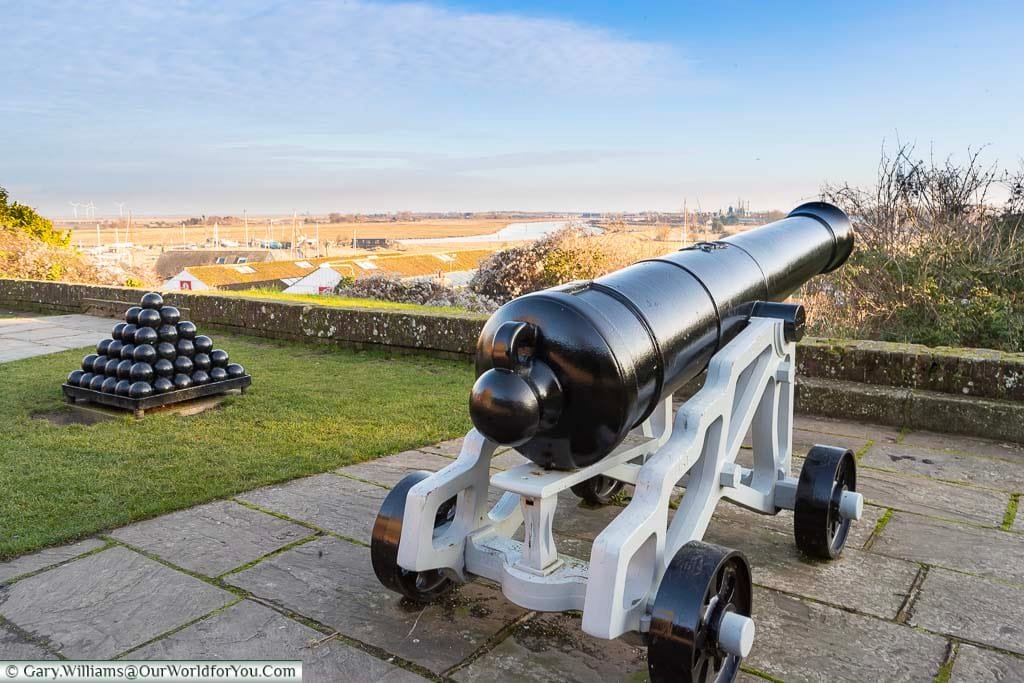
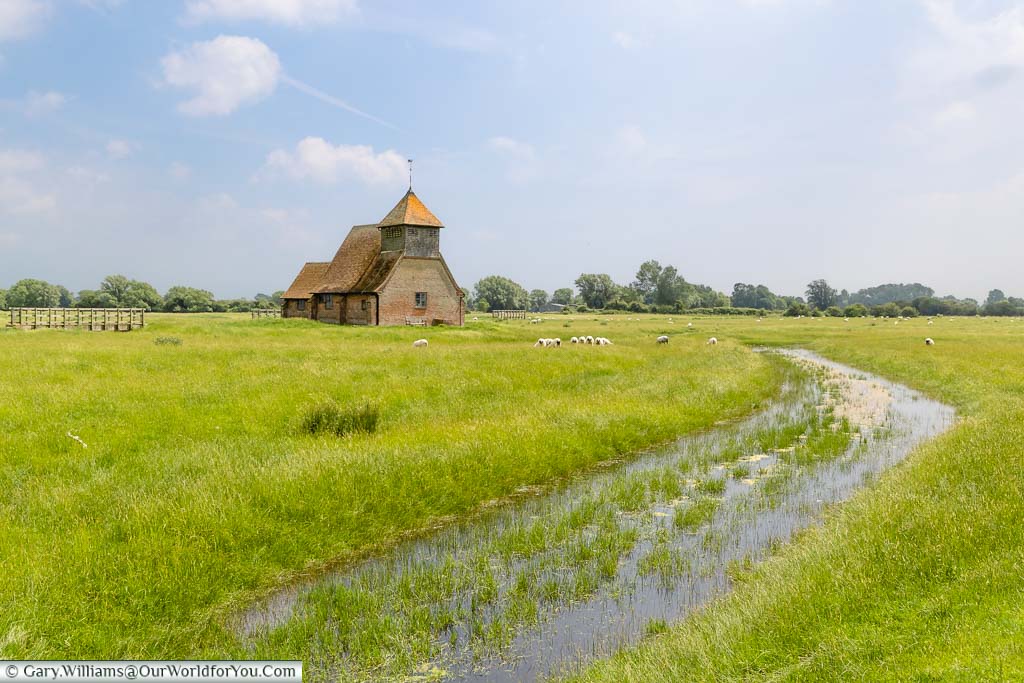
Another part of the Kent landscape that amazes me is around the hamlet of Small Hythe just outside Tenterden. Small Hythe was once a busy shipbuilding port on the Rother Estuary. The landscape changes can be seen from Chapel Down winery sitting higher upon the land.
The word Hythe actually means small port.
If you're intrigued by Kent's weird and wonderful history, or all unusual stories around the county, then take a peek at "Kent's Strangest Tales".
You won't be able to put it down, you can pick it up for your Kindle or in good old paperback.
Cinque Ports of Kent & East Sussex
The five ‘Head Ports’ are Dover, Hastings, Hythe, New Romney and SandwichDover in Kent
White Cliffs CountryWith its picturesque and iconic White Cliffs, Dover has continued to grow over the centuries and is now one of the UK’s major ports and thoroughfares.
Although the landscape may have changed, the magnificent sight of Dover Castle still stands strong. Dover Castle’s history dates over 800 years, and the Roman lighthouse built in the early 2nd-century can still be visited.
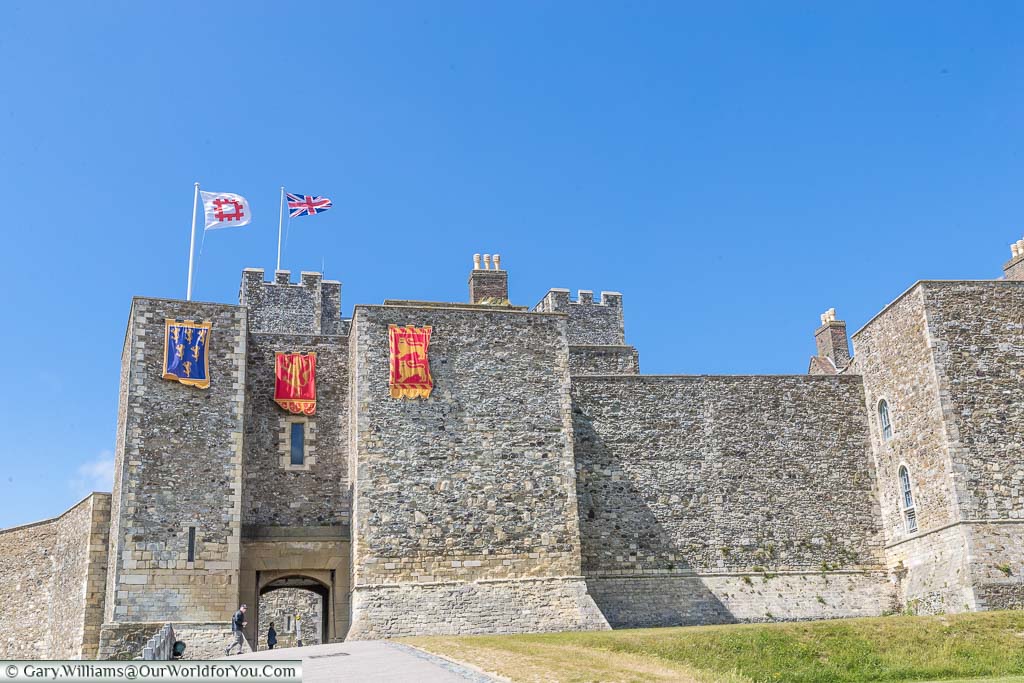
After William the Conqueror’s victory in the Battle of Hastings in 1066, the original defences were put in place at Dover Castle. Astonishingly from then on, Dover Castle was garrisoned up until 1958.
Dover Castle was really built as a palace rather than a fortress. It was Henry II who really left his mark on the fortification as he had the imposing Great Tower built-in 1189. Don’t forget to visit the Medieval and War-Time tunnels.
Hasting in East Sussex
Explore Rock-a-Nore and the TwittensThe coastal town of Hastings is a delightful place to visit. It’s full of so much charm and character all through its ancient streets.
I must admit I’m always drawn to the seafront, especially where the fishing boats land and where the black weather-boarded net sheds stand shoulder to shoulder along Rock-a-Nore.
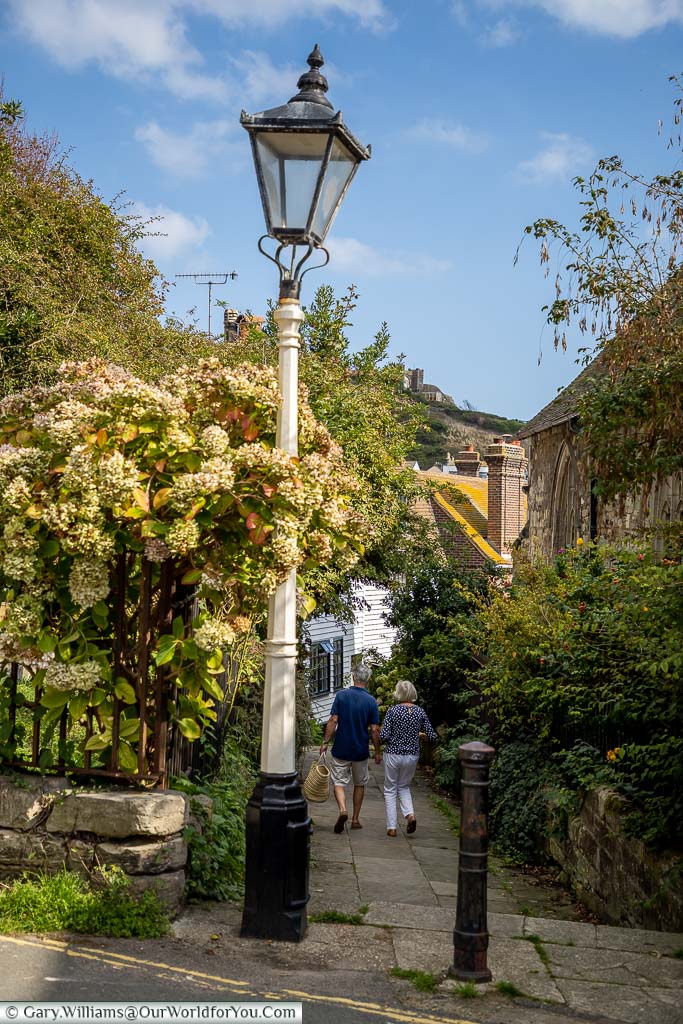
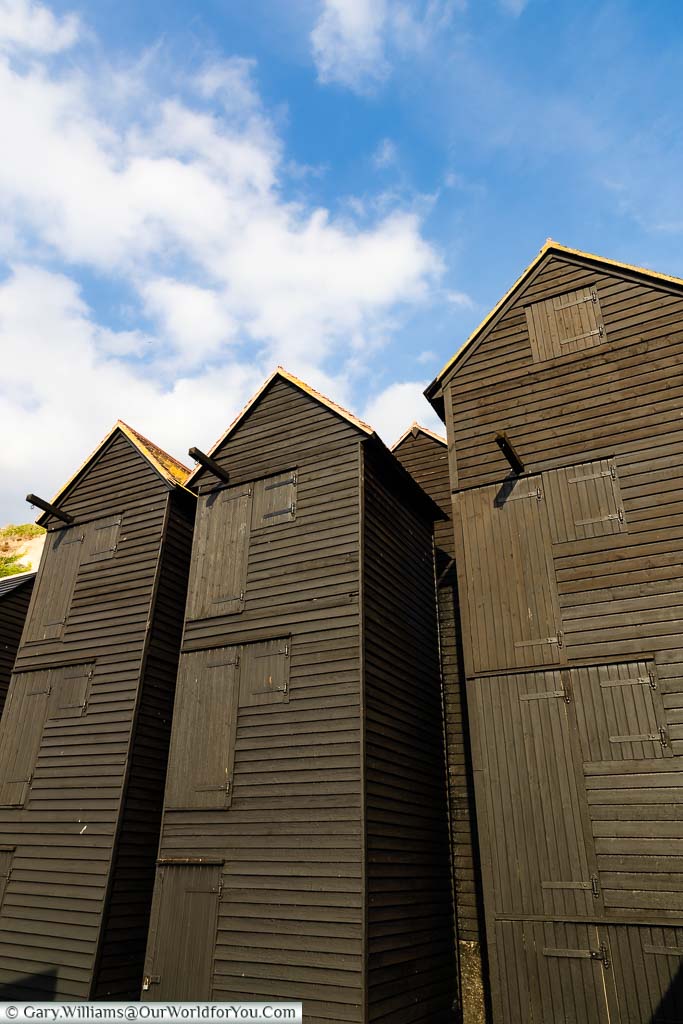
I could easily spend hours strolling around the picturesque lanes of All Saints’ Street and the historic High Street. The beautiful timber-framed homes and pastel cottages are stunning. Keep a lookout for the narrow passageways known as the Twittens; they’re so easily missed. You can imagine centuries ag ne’re-do-wells lurking in the shadows.
Oh, and a visit to the seaside wouldn’t be complete without having a promenade along the coastline and grabbing a bag of chips with lashings of salt and vinegar.
If you're intrigued by Sussex's fascinating past and weird and wonderful history around the county, then take a peek at "The A-Z of Curious Sussex".
You won't be able to put it down, you can pick it up for your Kindle or in good old paperback.
Hythe in Kent
Cruise along the Royal Military CanalThe coastal market town of Hythe is a little unique as the pebbly beach and shoreline is around ½ a mile from the historic town centre.
En-route you cross over the Royal Military Canal which stretches 28 miles from Seabrook near Folkestone to just outside Hastings. The canal was built as a defence against Napoleon and his forces.
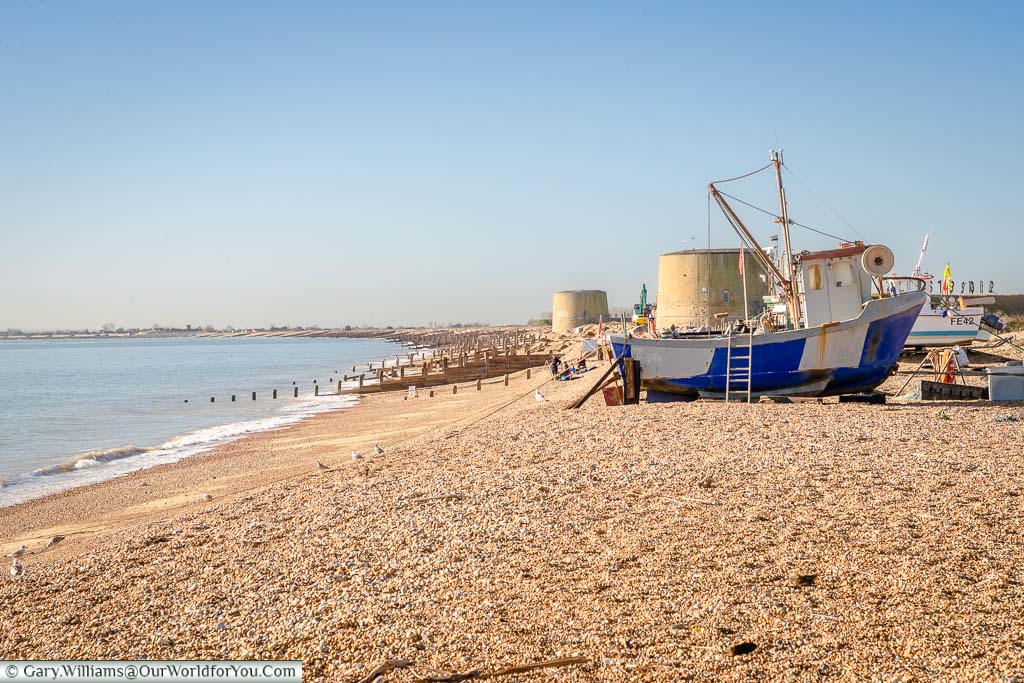
During the time that Hythe was supplying ships for the Cinque Ports, it possessed a bustling harbour. However, the harbour has now disappeared due to the continued silting and storms.
Strolling along the seafront, you can spot a couple of the Martello Towers, which were constructed simultaneously as the canal, also a defence against the French. In total, 74 towers were built along the Kent and Sussex shoreline.
New Romney in Kent
In the heart of Romney MarshNew Romney is a lovely old town full of character and history that you really feel like you stepped back in time. Distinctive buildings line the High Street with independent stores and tempting cafés.
New Romney is one of the Head Ports that felt the full force of the 1287 Storm. Once a harbour town sitting on the banks of the River Rother, New Romney is now over a mile away from the sea.
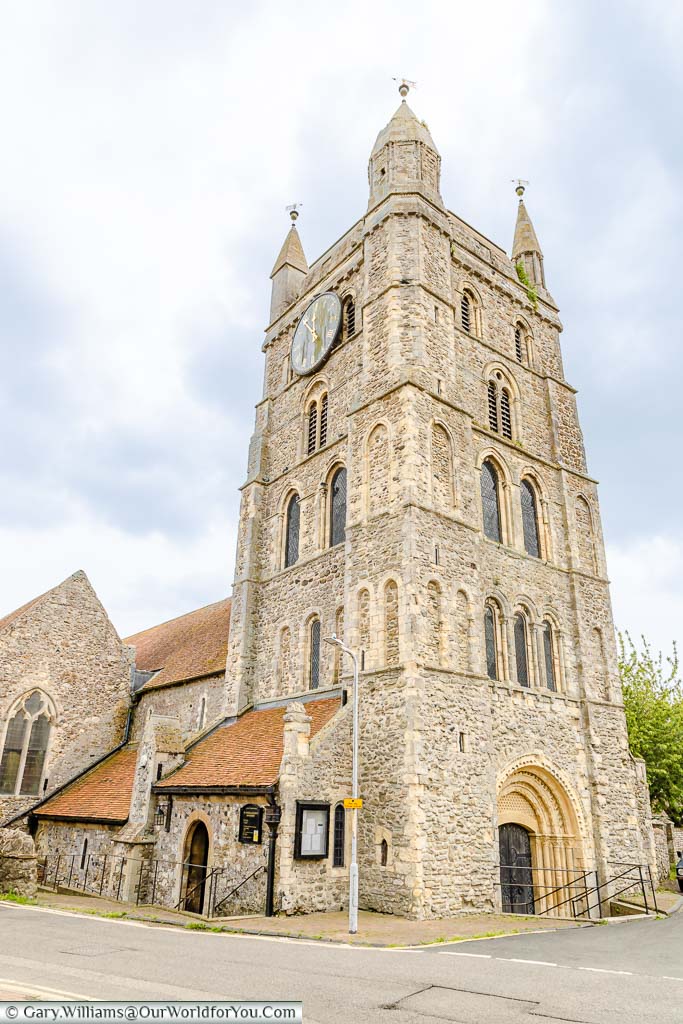
One of the survivors from the storm were sections of the medieval church of St Nicholas. You’ll notice when you approach the Norman Church that the street level is higher than the church entrance, and you need to step down to the door. This was due to the silt being deposited across New Romney.
We visited New Romney during our Romney Marsh Road Trip adventure; take a look at our itinerary it’s only a 45-mile loop.
Hiking the Kent & East Sussex Countryside
The Cinque Ports, Ancient Towns and Limbs are fascinating places to stroll around and the rolling countryside, coastlines and marshes. To explore the trails in these Kent & East Sussex regions, the Ordnance Survey maps that will help you along the route are no. 124, ‘Hastings & Bexhill’, no. 125, ‘Romney Marsh, Rye & Winchelsea’, no. 138, ‘Dover, Folkestone & Hythe’ & no. 150, ‘Canterbury and the Isle of Thanet’.
Alternatively, why not purchase and download the OS Maps App, which covers all of Great Britain.
Sandwich in Kent
More than a lunchtime snackI adore Sandwich; it is such an unassuming town; it has a wonderful community feel and manages to fly below the radar of many tourists.
Sandwich befell to a similar fate as New Romney and is now two miles from the sea. Even before Sandwich was a member of the Cinque Ports, the ancient Saxon town was well established in its own right. Before the River Stour silted up, hundreds of great sailing ships would enter Sandwich quay.
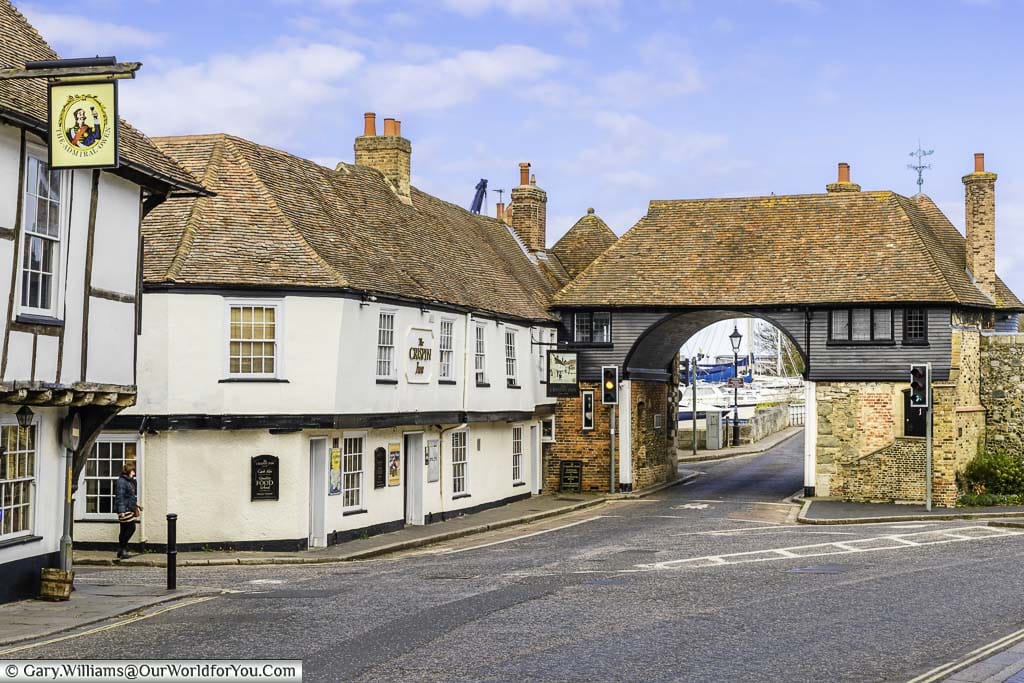
Sandwich is awash with medieval architecture, historic homes and ancient inns. The Sandwich toll bridge still crosses the River Stour; however, the fees levied today at the 14th-century Barbican are waived.
I love just aimlessly wandering around Sandwich; tiny lanes waiting to be discovered, quirky old shops to be explored, and historic taverns to be frequented.
Where to stay ...
The two ‘Ancient Towns’ of Rye & Winchelsea
Supporting Hastings in East SussexRye and Winchelsea are just a short hop from each other and both incredibly fascinating to visit. Rye is the larger out of the two and has a very captivating past.
Ypres Tower is sitting high on a rocky outcrop, also known as Rye Castle and once had a view over Rye’s natural harbour. The harbour has now long gone, and today the far-reaching views are saltwater marshland.
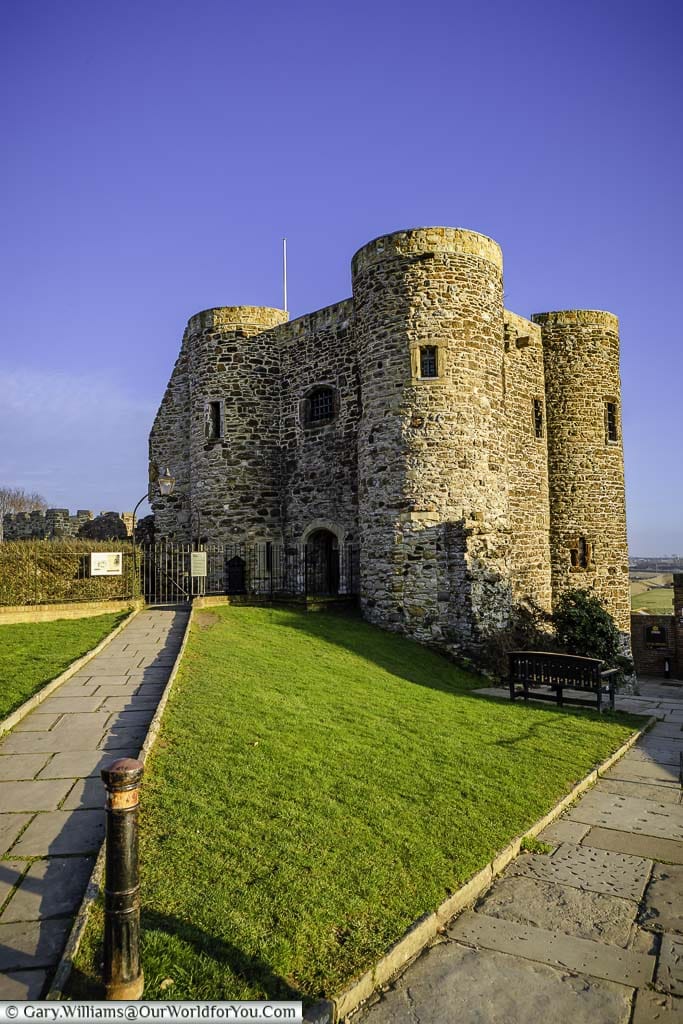
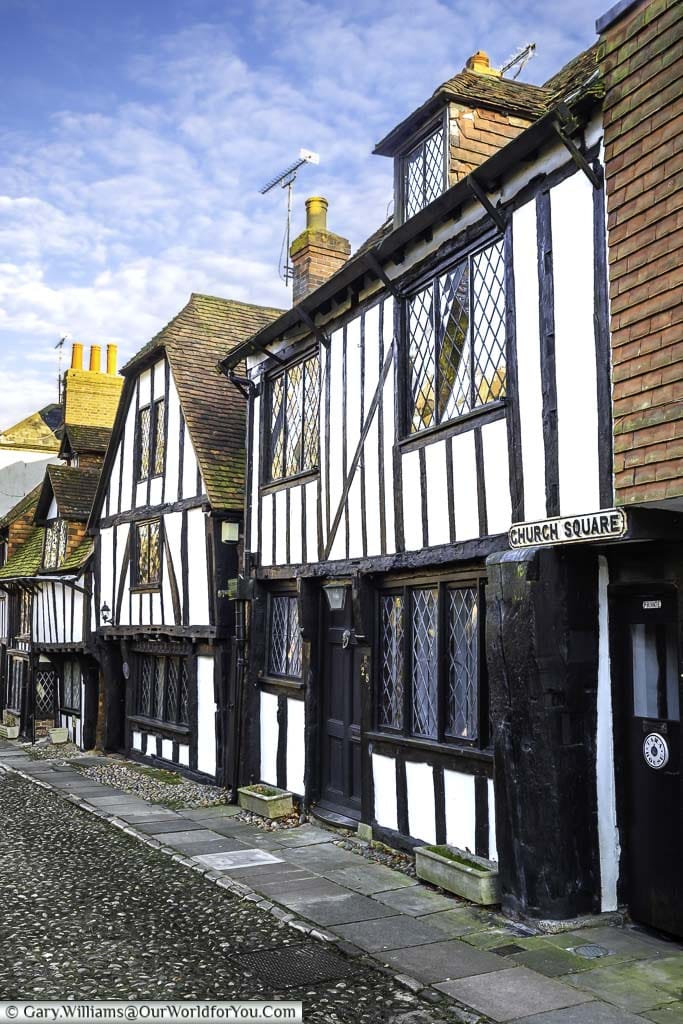
Only one of Rye’s four fortified gates remain, and it leads you through into the charismatic old town where ancient smuggling stories are shared, and the quaint cobbled lanes wait to be explored. There are beautiful timber-framed homes around Church Square and Mermaid Street; you can understand why Rye has been used many times on TV.
The ancient pub which will catch your eye along Mermaid Street is the Mermaid Inn. It was rebuilt in 1420 and had a very rich and interesting past dating from 1156. Tales of the Hawkhurst Gang are shared over the Giant’s Fireplace, and if you stay for the evening, you may even see a ghost.
Winchelsea, which now sits on Iham Hill, was once located on the landscape below. The original town is, now referred to as Old Winchelsea, has been lost forever.
You’d be forgiven for believing that Winchelsea is a village as it is so tiny; however, it has its own town mayor and counts itself as the smallest town in England. It was granted town status by Edward I around 1292 and today has a population of about 600.
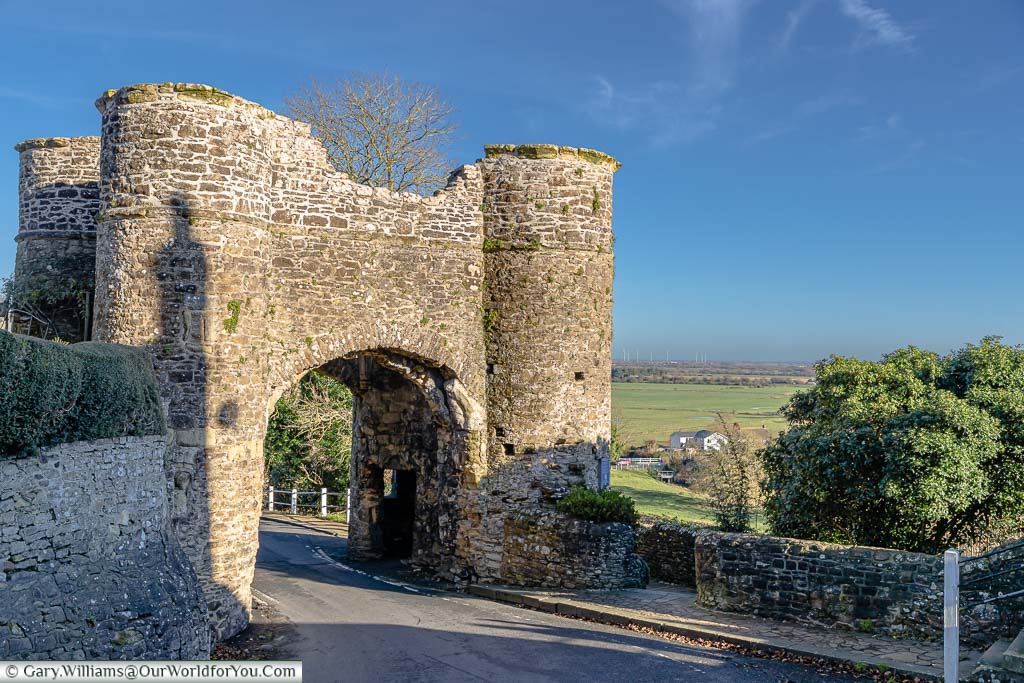
A distinct feature around the serene historic streets of Winchelsea is its medieval wine cellars. Trade-in Bordeaux wine with France during the 1300s was very prosperous; the wooden entrances to the barrelled vaults can be seen from the roadside and are lined with its original Caen stone.
Three of Winchelsea’s four 13th-century town gates remain, and incredibly traffic still passes through Strand Gate. It is such a tranquil and captivating place to stroll, and its tiny cottages are stunning.
During the 17th-century, the Duke of Wellington’s troops were quartered in Winchelsea. It is believed the Duke stayed in Tower Cottage while assessing his troops during the Napoleonic wars.
Escape for a few days
Are you in search of a tranquil hideaway to relax and unwind in, while you discover the beautiful British countryside?
Browse through the handpicked properties and unique retreats at Holiday Cottages.
The Cinque Ports seven surviving ‘Limbs’
Scattered along the Kent coastDuring the height of the Cinque Ports naval requirements, there were up to 30 ‘Limb’ towns and villages called upon. The seven main surviving ‘Limbs’ are Deal, Faversham, Folkestone, Lydd, Margate, Ramsgate, and Tenterden.
Dover would call upon Folkestone, Faversham, and Margate. Sandwich would enlist Deal and Ramsgate; New Romney would have assistance from Lydd, and Rye would call upon Tenterden.
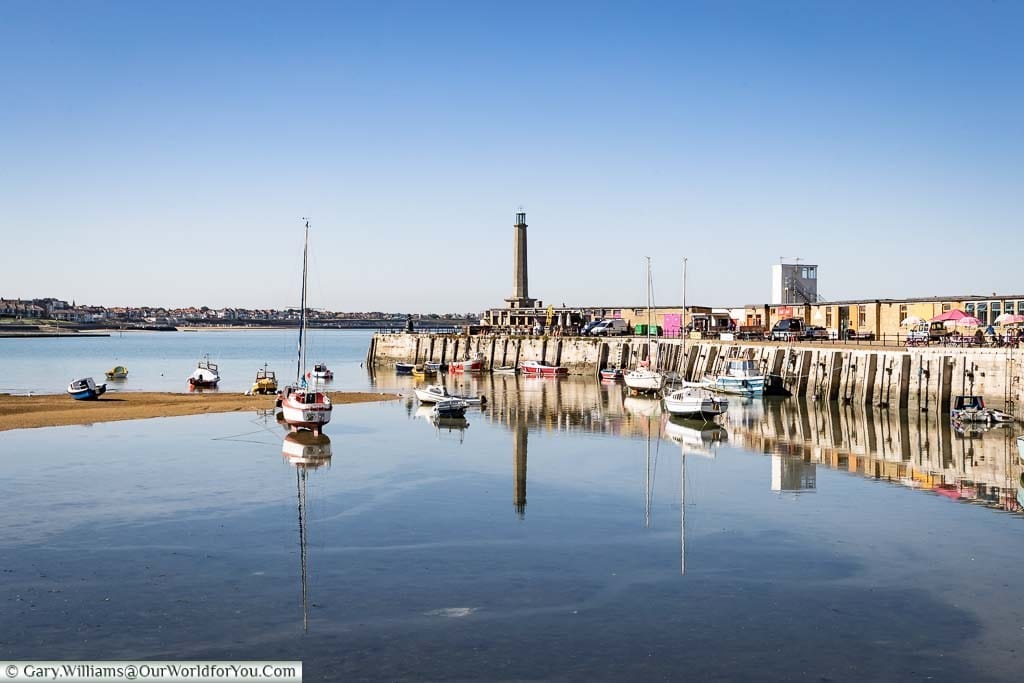
Folkestone and Margate are now flourishing seaside towns. Folkestone is presently going through a magnificent rejuvenation. It has the UK’s largest open-air urban art exhibition, accessible 365 days of the year. It also has an up-and-coming food scene amongst its Creative Quarter.
Margate, on the other hand, has always thrived on its slapstick seaside fun, with its sweeping golden sandy beaches and now the Turner Contemporary gallery to visit.
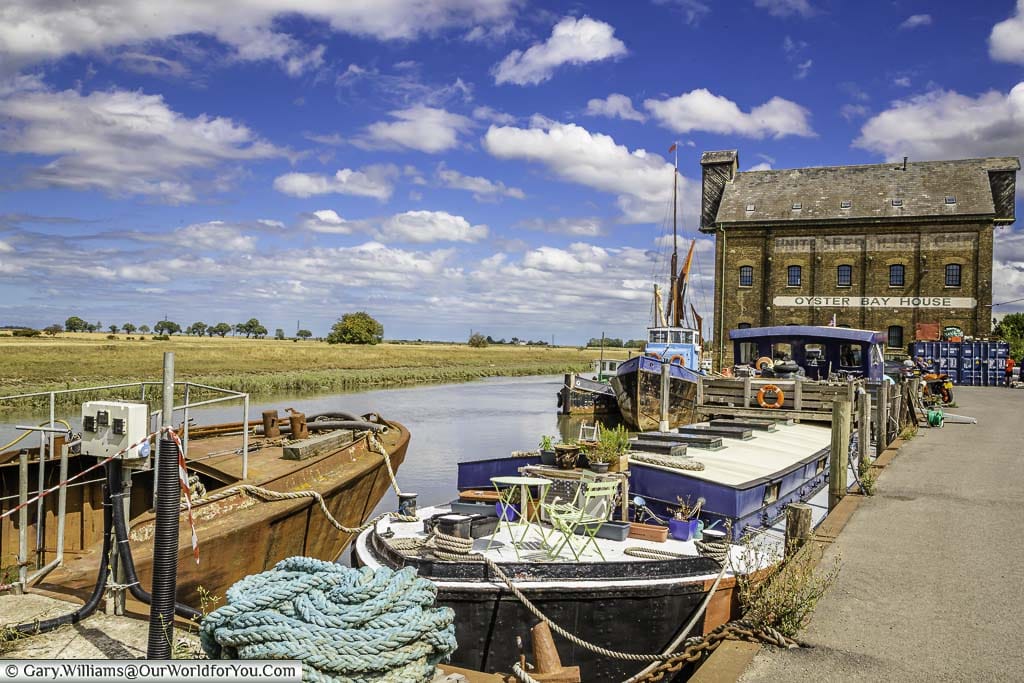
The attractive market town of Faversham, although is inland, also had a thriving seaport located on Faversham Creek. Stroll down to Standard Quay to see the medieval creek, old sailing barges and Victorian warehouses. Don’t be mistaken that Faversham is all about its historical town centre and Shepherd Neame Brewery.
Deal and Ramsgate, who came under the wing of Sandwich, also have fascinating pasts. Deal has a lovely traditional seaside feel about it. After a visit to Deal Castle, a promenade along its pier and a meander amongst its pastel-coloured lanes, I believe fish and chips are the order of the day.
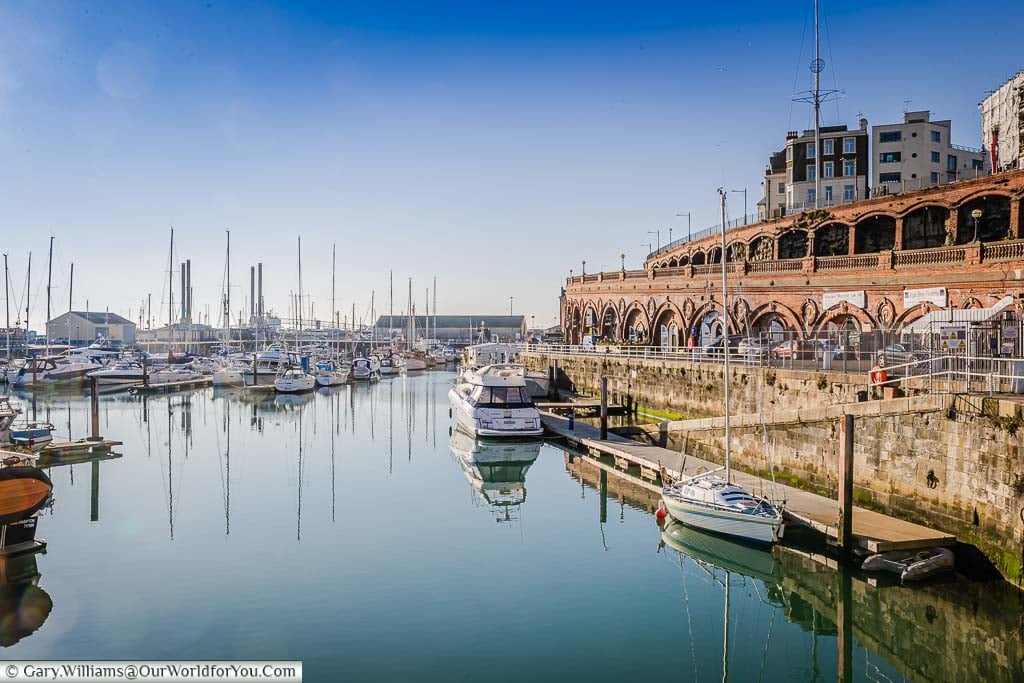
Ramsgate to this day still has a bustling harbour and marina and is the only Royal Harbour in the UK. It was granted this honour by King George IV in 1821. Furthermore, Ramsgate played a prominent role in 1940 during Operation Dynamo when flotilla’s of ‘little ships’ headed across to Dunkirk.
We then come to Lydd, a ‘limb’ of New Romney and the most southerly town in Kent. Lydd is another reasonably small town; however, it has the longest church in the county of Kent. The 13th-century All Saints Church is known locally as the ‘Cathedral of the Marsh’ and is 199ft (60.7m) in length.
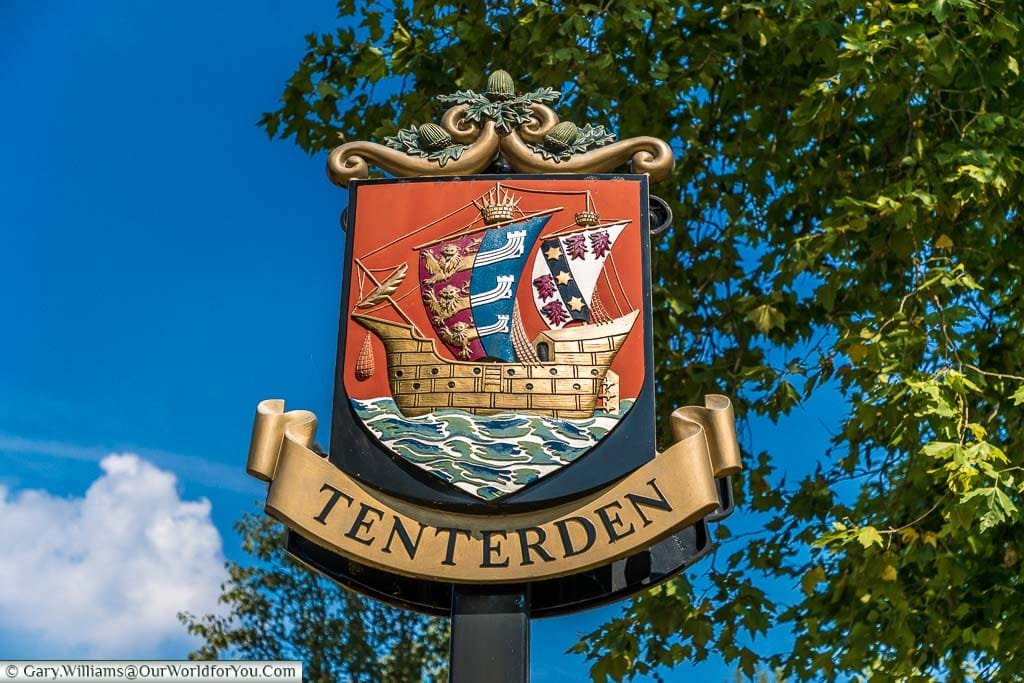
Last but by no means least is the picturesque town of Tenterden, which was the ‘limb’ of Rye. As mentioned above, the hamlet of Small Hythe is just down the road from Tenterden and was once a couple of miles from the sea. Today Tenterden is an incredible 13 miles away from the coast.
Tenterden is a delightful town and if you love heritage steam trains, hop on the Kent and East Sussex Railway line to Bodiam Castle in East Sussex. It’s a scenic journey across the Kent countryside and visits five stops along the 50-minute trip.
That concludes my whistle-stop tour of the Cinque Ports; drop me a comment below if you would love to know more about these intriguing places?
* This post may contain links to affiliated sites where we earn a small commission at no additional charge to you.



